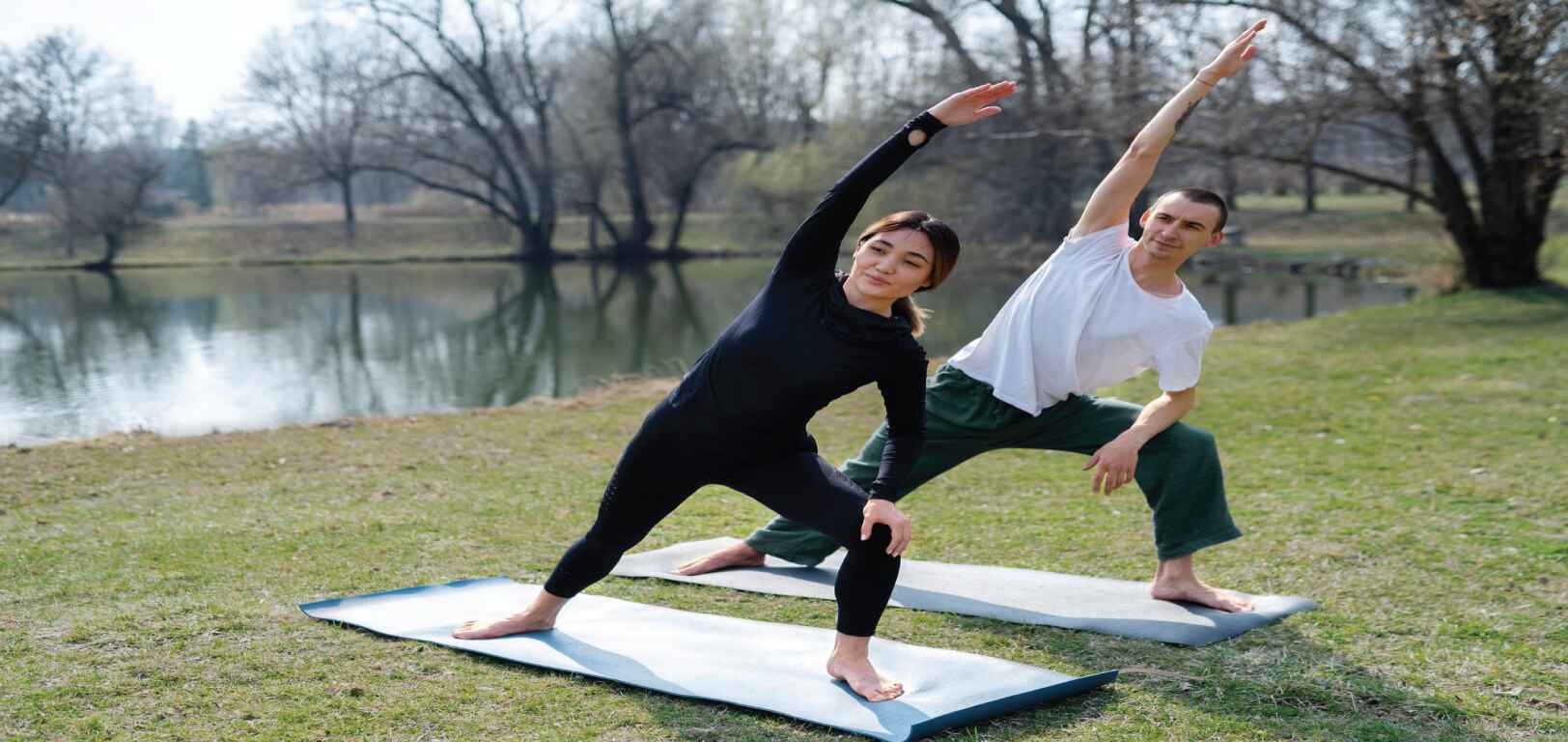While society often fixates on rapid methods for results and fleeting fitness fads, wisdom compels us toward health as a lifelong pursuit. Good wellness emerges not from temporary trends but from dedicated practices which nourish body and spirit with staying power. Called “training for longevity,” this discipline encourages activities supporting suppleness, poise, and cheer into our later years. Some days find us energized, others weary, and these routines see us through both in balance. Spare moments join with plans to build resistance to stiffness and infirmities of age. Over time, consistent small steps compound into the gift of active years ahead.
This article will delve into the most effective exercises for promoting longevity, including their mechanisms, how they benefit our bodies and minds, and integrating them into a balanced routine for lifelong vitality.
The Importance of Training for a Long Life
Living a long and fulfilling life necessitates more than just preventing illness. It requires preserving muscle mass, joint health, cardiovascular fitness, flexibility, and mental acuity well into old age. Training for longevity cultivates the body in ways that help it age elegantly, maintaining functionality deep into life.
Why Exercise Augments Longevity
Numerous scientific studies demonstrate that regular physical activity can decrease the risk of many chronic diseases, like heart disease, diabetes, and certain cancers. Exercise also enhances cardiovascular health, lowering blood pressure, aiding blood sugar regulation, and boosting immunity. Furthermore, physical activity contributes to sustaining mental health by reducing the likelihood of cognitive decline and mental issues such as anxiety and depression.
Most importantly, exercise helps preserve functional fitness, our ability to easily perform everyday tasks like bending to retrieve groceries or ascending stairs. Without regular movement, muscle mass declines precipitously, flexibility diminishes considerably, and joints become quite stiff, inevitably resulting in reduced independence as the years pass.
Key Exercises for Longevity
The following exercise types play a pivotal role in promoting a long, active, and wholesome life.
Strength Training:
Building Muscle is Critical for Health in Later Life.
Though often associated with bodybuilding, strength training is crucial for longevity. Naturally, as age advances, muscle mass decreases drastically through a process known as sarcopenia. This muscular loss can lead to weakness, impaired balance, and even injury. Strength training helps battle sarcopenia by maintaining and developing muscle mass, essential for performing daily routines and preventing falls.
Key Benefits:
- Raises bone density, reducing the risk of osteoporosis.
- Improves metabolic health, aiding blood sugar and insulin sensitivity regulation.
- Enhances balance and coordination, decreasing the risk of falls and fractures.
- Promotes a healthy metabolism by increasing muscle mass, which burns more calories even at rest.
Recommended Strength Routines for Longevity:
- Squats : Squats build lower body power, enhance equilibrium, and endorse practical mobility.Deep squats toughen legs and hips, core for steadiness, and reinforce bones.
- Deadlifts: Deadlifting fortifies the back, thighs, and calves, essential for picking objects up.
- Push-Ups: Pushups enhance upper body durability and involve the core for security.
- Resistance Band Workouts: Resistance bands supply opposition while being gentle on joints, helping continue muscle toughness without injury jeopardy.
Cardiovascular Physical exercise: Reinforcing the Core and Lungs
Coronary health is one of the strongest determinants of extended life. Normal aerobic workout helps optimize the heart and lungs, decreasing the risks of cardiovascular illnesses including myocardial infarctions and strokes. Cardio also aids maintain a balanced weight, reduces blood pressure, and improves cholesterol levels.
Key Gains:
- Toughens the heart and improves blood flow.
- Lessens the dangers of coronary illness, stroke, and hypertension.
- Amps lung capacity, rendering breathing simpler and more proficient.
- Trims body fat and promotes balanced body composition.
Recommended Cardio Exercises for Longevity:
Walking: Walking remains a popular low impact exercise choice that strengthens the heart while also nourishing joint mobility. A simple stroll around the block delivers diverse health advantages anywhere outdoors or inside.
Cycling: Cycling provides a lower body workout that enhances cardiorespiratory fitness and protects against wear and tear on weight-bearing joints. Pedaling promotes pulmonary circulation and oxygen transfer without high-impact pressures.
Swimming: Swimming engages the entire musculature in a smooth motion relaxing to the muscles and joints. Propelling through water builds cardiovascular endurance and stamina in a buoyant environment gentle on the system.
Interval Training (HIIT): Interval training animates the physiology with bursts of vigorous movement alternating recovery intervals. This style of training taxes the oxygen processing capacity of the heart and lungs while simultaneously cultivating muscle strength and endurance optimizing time spent exercising.
Flexibility and Mobility: Maintaining Range of Motion
As we age, flexibility and mobility commonly deteriorate, potentially limiting our ability to complete everyday tasks. Stretching and mobile routines are pivotal for maintaining joint wellness, preventing stiffness, and improving posture. Flexibility exercises also help alleviate discomforts by reducing muscle tightness and boosting circulation.
Key Benefits:
- Avoids joint rigidity and promotes ease of movement.
- Decreases the danger of injury by widening the scope of motion.
- Relieves muscle tension, leading to less trouble and suffering.
- Improves posture, balance, and alignment.
Recommended Flexibility and Mobility Routines for Longevity:
Yoga: Combines stretching and strength-building positions, furthering flexibility, balance, and mental well-being.
Pilates: Centers on strengthening the core and improving posture while enhancing flexibility and mobility.
Dynamic Stretching: Involves active motions that stretch the muscles, such as leg swings and arm circles, to broaden range of motion and blood flow.
Static Stretching: Holding a stretch for 20–30 seconds to lengthen the muscles and promote relaxation.
Balance and Stability: Preventing Falls and Injuries
As we grow older, maintaining equilibrium and self-steadiness develops increasingly significant as it assists protect against falls, which can lead to bone fractures and loss of freedom. Balance exercise reinforces the muscular tissues and enhances synchronization, guaranteeing that we can move confidently in everyday life with assurance.
Key Advantages:
- Improves coordination and decreases the danger of falls.
- Strengthens stabilizing muscles that back posture and motion.
- Enhances proprioception (recognition of body situation) for improved balance and motion performance.
- Extends confidence in performing everyday jobs.
Suggested Balance and Stability Workouts for Longevity:
One-Leg Stands: Enhances balance and toughens the legs.
Tai Chi: A gentle type of exercise that combines slow-moving motions with concentration on balance and flexibility.
Bosu Ball Routines: Participating in exercises like squats or lunges on a Bosu ball tests stability and balance.
Heel-to-Toe Walking: Walking in a straight line, positioning one foot directly facing the other, assists boost balance and synchronization.
The Impact of Emotional Wellness on Lifespan
One’s psychological health is equally vital for living a long and fulfilling life. Persistent anxiety, depression, and stress can negatively influence physical health by increasing the risk for heart disease, obesity, and a weakened immune system. Incorporating mindfulness practices into your workout routine can enhance mental clarity, lessen tension, and encourage emotional balance.
Notable Benefits of Mindfulness and Mental Well Being Practices:
- Lowers cortisol levels which, if elevated for too long, can harm the body.
- Improves quality of sleep, essential for muscle recovery and psychological well-being.
- Boosts focus and concentration, permitting better performance in fitness and daily undertakings.
- Cultivates a positive outlook, strengthening resilience and emotional health.
Recommended Mindfulness Practices for Increased Lifespan:
Meditation: Alleviates stress, unease, and mental fatigue while bettering focus and relaxation.
Deep Breathing Exercises: Facilitates relaxation and reduces stress, which can advantage both mental and physical health.
Gratitude Journaling: Encourages an optimistic mindset and may improve mental health by concentrating on life’s positive aspects.
Visualization Techniques: Helps sustain motivation by picturing future fitness goals and accomplishments.
Putting It All Together: A Balanced Routine for Longevity
To maximize the benefits of longevity focused training, it’s crucial to craft a holistic fitness routine incorporating strength, cardiovascular exercise, flexibility, balance, and mental well-being. Here is a sample weekly schedule with variation:
Monday: Full-body strength training challenges the body.
Tuesday:Bring a brisk walk or leisurely bike ride for cardiovascular stimulation.
Wednesday: Feature yoga or Pilates, emphasizing flexibility and mobility. Thursdays lower-body strength takes priority.
Fridays: Involve challenges to balance and stability like Tai Chi or single-leg maneuvers.
Saturday: Switch to high-intensity interval training or swimming for cardio.
Sunday:Offer rest and mindfulness through meditation or journaling.
By incorporating these exercises and practices into your life, you’ll be setting yourself up for improved health, increased vitality, and a longer, more active life. In the same way that people seek out high-quality tools for maintaining other aspects of their lives (e.g., checking tractor for heavy-duty machinery), it’s important to invest in your body’s longevity by choosing the right exercises and routines.
To Wrap Up
While pursuing longevity in the moment may center on mustering muscle or dropping dress sizes, the quest for a long life is truly a life-spanning dedication to safeguarding physical fitness, versatility, and emotional welfare. By prioritizing a melange of toughness instruction, cardiovascular activity, suppleness, stability, and attentiveness, one champions a wholesome, lively time ahead well after one’s brilliant period.




Be First to Comment